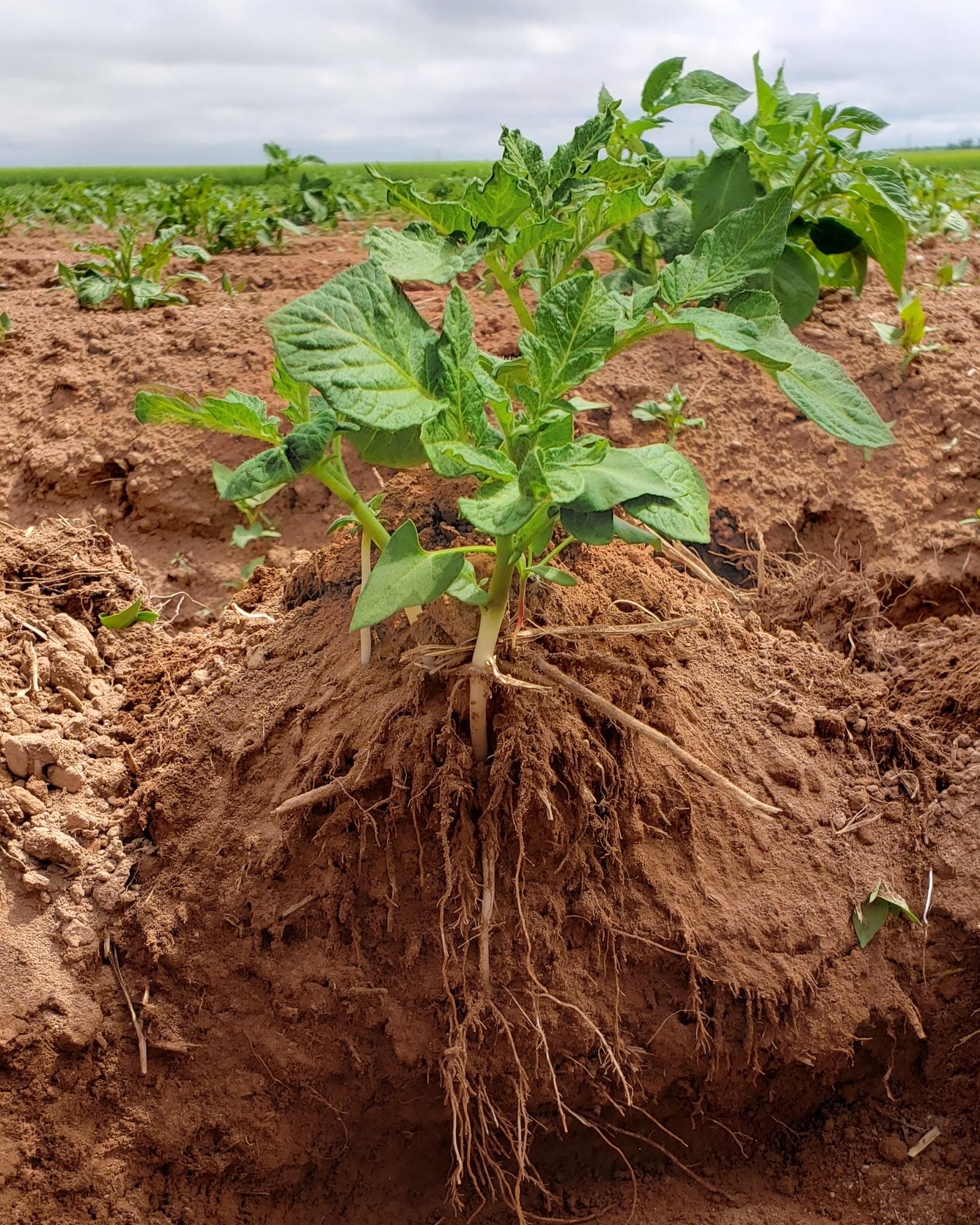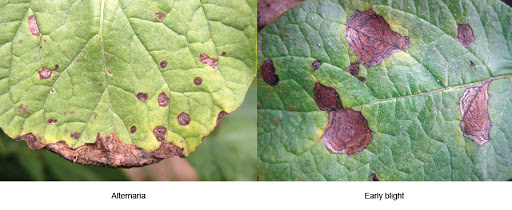
30 Jun Agronomy Update – June 30
Hi everyone,
Once again, we’re all praying for rain…earlier than normal this year. While not much rain arrived over the weekend (except for some lucky folks in Kings County), they have increased the forecasted amount for Thursday. Let’s hope that we get all of it and more.
Surprisingly, there is still some decent soil moisture down in the soil profile. I haven’t seen many potato fields struggling yet, but they will need a drink pronto. I’ve seen more issues with the grain and forage crops so far. Barley and wheat is starting to head out…will need some moisture to get yield and test weight. First crop of hay was light for a number of farmers, so rain will be needed to get a decent second cut.
Fungicide Management
As potatoes emerge and start to grow rapidly, it’s important to be thinking about your fungicide program. Some fields will be requiring their first fungicide application soon if they haven’t had one already. Many producers are using one of the decision support tools like Ukko Agro or Airspore to help with your decision making, which is great.
In hot and dry weather, Alternaria management should be a priority, especially on varieties that are notably susceptible (ie. Ranger Russet). In the past couple of years, local testing has shown brown spot (Alternaria alternata) to be more common than early blight (Alternaria solani). If you see any foliar symptoms that you think are either early blight or brown spot, I would recommend submitting samples to the provincial lab for analysis.

Photo: OMAFRA
If you’re trying to tell brown spot and early blight apart, brown spot (left) usually has smaller lesions that are more numerous. Brown spot is usually also more evident at the edges of the leaves. Early blight (right) are usually larger lesions with concentric ring patterns evident. Brown spot can have rings as well, but are usually not as pronounced.
A key to early blight/brown spot prevention is getting effective fungicides on before row closure, to ensure coverage on the bottom leaves. Infection most often starts on the lower leaves and then spreads upward from there.
In terms of choice of fungicide, make sure you are using the right tool for the job. If you are primarily dealing with early blight, you have more products to choose from. If you are more concerned about brown spot (A. alternata), then the list is a little smaller. Some products labelled to control both early blight and brown spot include Luna Tranquility, Quadris Top, and Aprovia Top. Chlorothanonil (Bravo/Echo) is also labelled for both early blight and brown spot, but generally doesn’t show the same effectiveness as the more targeted products mentioned above. If you used Velum Prime in-furrow for root lesion nematode control, you should get some early blight control early in the season as Velum Prime (fluopyram) is half of the active ingredients in Luna Tranquility.
Another disease to keep an eye out for is black dot (Colletotrichum coccodes). We generally haven’t seen black dot here in PEI as much as in the Western USA and Western Canada, but important to monitor for it as it can be a yield drag pathogen, particularly in dry conditions.
Looking Ahead at Late Blight
Concurrent with decisions on early blight/brown spot management, growers are making plans for late blight prevention. So far the conditions have not been conducive to late blight, but the forecast looks a bit more blight-oriented in the near future. I am seeing more potato volunteers around this year after the relatively mild winter, so there will likely be more risk of inoculum in the environment. Alberta has already report late blight incidence so far this growing season.
The two main choices for contact fungicides have been under re-evaluation recently. Mancozeb (Dithane, Manzate, Penncozeb) is still under re-evaluation but there are not label changes for this growing season. Metiram (Polyram) has been discontinued by the manufacturer, so I believe this is the last year to use both Polyram and Cabrio Plus. Be sure to check with your supplier for product availability and usage restrictions.
Chlorothalonil (Bravo and Echo) has completed re-evaluation by PMRA. It now can be used a maximum of 3 times per growing season, and the REI (re-entry intervals) have changed, especially for re-entry for rogueing (19 days) versus scouting (3 days). Therefore, Bravo/Echo would not be a great choice for seed producers early in the season.
In addition, both chlorothanonil and mancozeb are rated as high-risk fungicides for toxicity to aquatic life (including fish), with chlorothanonil being particularly noted in present after previous fish kills in PEI. Before row closure, make every effort to avoid spraying these contact fungicides on bare soil, especially if there is a risk of thunderstorms in the forecast. Use of band spraying for the first couple of applications is recommended, as this reduces the amount of fungicide that makes contact with the soil while also reducing the amount of product needed per acre! I would generally recommend that growers consider not using Bravo/Echo until after full canopy to reduce the risk of fish kills, particularly in fields near watercourses. Given that you only have a maximum of 3 applications of Bravo/Echo during the season, it is important to plan out your fungicide schedules with these factors in mind.
Weeds, Weeds, Weeds
I’m getting lots of questions about weed control. It’s going to be a weedy year, that’s for sure. A lot of pre-emerge herbicides were limited in effectiveness due to the dry conditions (particularly Lorox). Seeing lots of lambs quarters, redroot pigweed, wild buckwheat, and barnyard grass around (among others). I know a few growers are planning to go with some Sencor/Prism in the near future to try and clean up some weeds. Keep an eye on your fields and do what you can to keep on top of the weeds.
A happy Canada Day to all of you, and here’s hoping for some rain ASAP!
Ryan
